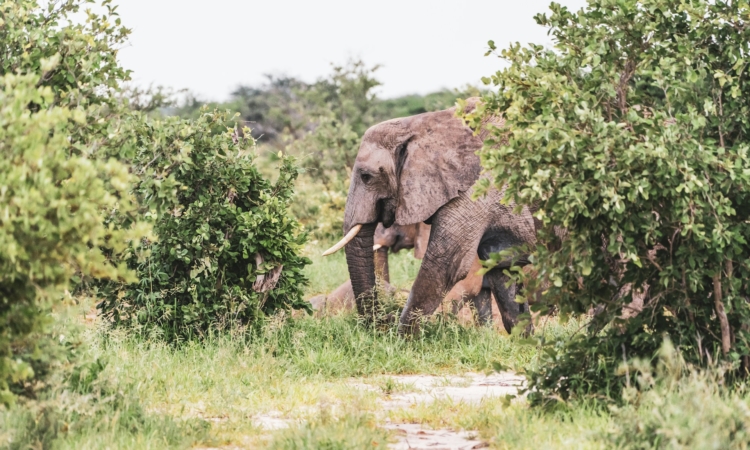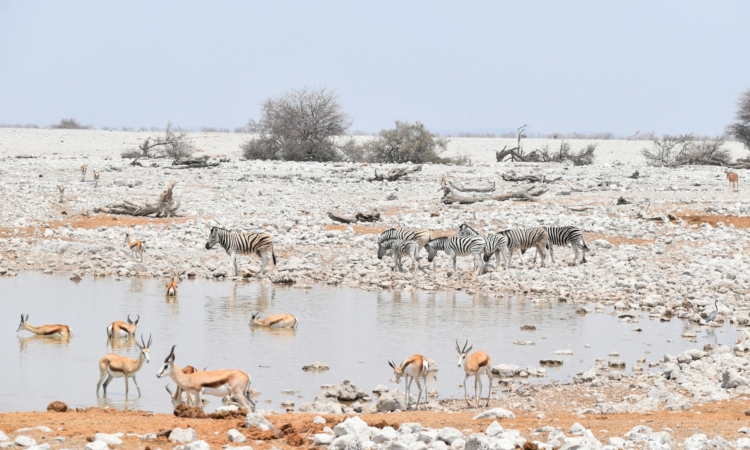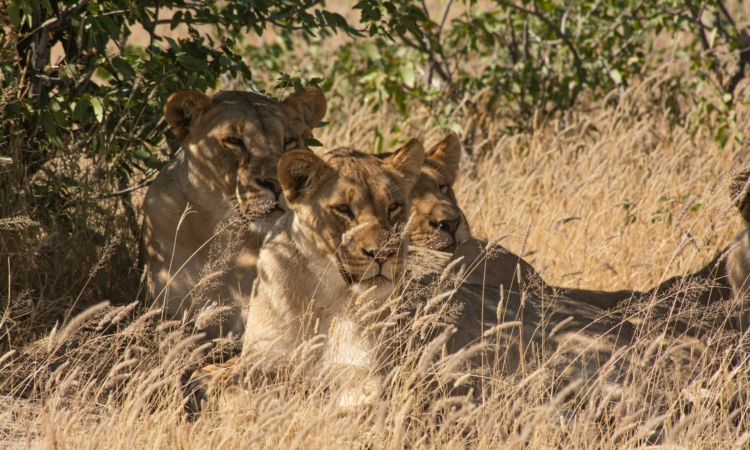Etosha National Park is a well-known wildlife area in northern Namibia. It covers more than 22,000 square kilometres and is recognised as one of the most unique landscapes in Southern Africa. At its centre is the vast Etosha Pan, a wide, flat, salty expanse that makes up more than a quarter of the park. This white pan is a dry lakebed that sometimes fills with shallow water during the rainy season, attracting large numbers of flamingos and other waterbirds.
The areas around the pan include open savannah, thorn scrub, and mopane woodland. These habitats support many kinds of wildlife. Because the vegetation is not too thick, it is easier to see animals, especially near the many natural and man-made waterholes. Etosha has a dry climate, with the wet season running from November to April and the dry season from May to October. These changes in weather affect where animals move and how plants grow, creating a natural cycle in the park.
The park is home to more than 114 species of mammals. Visitors can see lions, elephants, leopards, giraffes, cheetahs, rhinos, and large herds of zebras, springboks, and wildebeests. It is also a refuge for rare and endangered animals such as the black rhino and the black-faced impala. Birdlife is also rich, with over 340 recorded species. These range from birds of prey and ground-dwelling birds to colourful species such as bee-eaters and hornbills.
During the rainy season, temporary wetlands form in parts of the park, attracting many migratory birds. This seasonal arrival adds to the variety of wildlife and makes Etosha a special place for nature viewing throughout the year.







